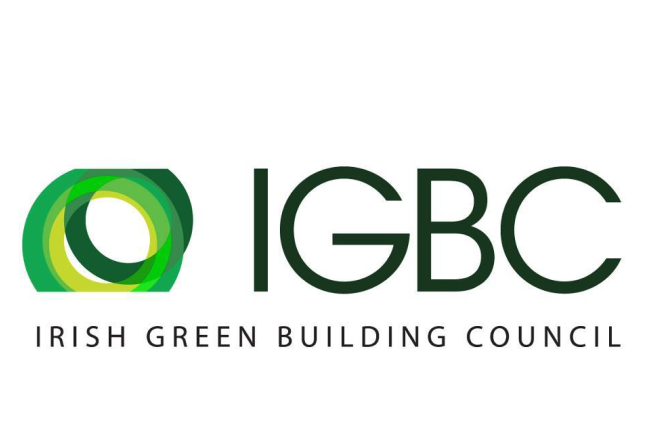
Dept of Housing set to launch new Part L for non-domestic buildings
At the time of going to press, the Department of Housing, Planning, Community & Local Government was set to imminently launch a public consultation on a major revision to Part L of the building regulations for buildings other than dwellings.
This article was originally published in issue 19 of Passive House Plus magazine. Want immediate access to all back issues and exclusive extra content? Click here to subscribe for as little as €10, or click here to receive the next issue free of charge
The new version of Part L for non-domestic buildings is expected to demand a 50-60% reduction in energy consumption compared to the current version of the regulation, which was last updated in 2008, and is regarded by many in the building sector as being woefully out of date. The new regulation is also expected to mandate that more than 20% of the energy demand for non-domestic buildings be met with renewable energy, an ambitious target that may have the knock-on effect of pushing building designers to cut energy demand as low as possible. The use of a percentage of renewables instead of a kWh total indicates the department may have recognised the tension, as apparent in Part L for dwellings, between setting fixed renewable energy targets and energy demand reduction measures – where particularly low energy buildings may not have sufficient demand to meet the 10 kWh/m2/yr thermal renewable energy target, for instance.
Under the Energy Performance of Buildings Directive (EPBD), European member states must ensure that all new buildings owned and occupied by public authorities meet the ‘near zero energy building’ requirement after 31 December 2018, followed by all new buildings after 31 December 2020.
In our last issue, Passive House Plus outlined how Ireland is likely to be in breach of this requirement because of the failure to update Part L for non-domestic buildings in time. Buildings designed and constructed before the December 2018 deadline, but occupied after that date, will be in breach of the requirement as transitional arrangements are not permitted by the EPBD. This may explain why the department has promised that the NZEB specifications for public buildings would be in place by the end of 2016.
The new version of Part L for buildings other than dwellings is set to be finalised by the middle of 2017. The department expects the new version to contain the same ‘backstop’ U-values as the domestic version of Part L (0.20 for roofs, 0.21 for walls and floors, 1.6 for windows) and to introduce mandatory airtightness testing with a minimum acceptable result of 5 m3/hr/m2.
Speaking to Passive House Plus, leading Irish passive house architect and Passive House Plus columnist Simon McGuinness described the airtightness target as “disappointing” and suggested it’s reflective of a “blind spot” that the Irish construction industry has in regards to airtightness. He did, however, welcome the fact that the regulations will require the calculation of linear thermal bridging at major junctions.
The revised standard is also expected to apply to major renovation projects which upgrade more than 25% of the surface area of a building’s envelope.
McGuinness suggested this may mean that the installation of new windows to a non-domestic building, or the re-roofing of a school, could trigger a legal requirement to upgrade the entire building to NZEB standard.
The department has indicated that the new regulations are likely to emphasise the use of natural ventilation, which could be interpreted as worrying given increasing standards of airtightness and question marks over the effectiveness of some forms of natural ventilation in delivering reliable fresh air to all parts of a building’s interior. But speaking to Passive House Plus, Pat Barry of the Irish Green Building Council emphasised that the requirement for natural ventilation may simply be a demand that building occupants be able to open windows in addition to any mechanical ventilation systems. The full detail of the ventilation requirement will only be revealed when the draft regulation and associated technical guidance is published.
Barry’s initial response to the proposals was lukewarm. “The requirements are considerably less than the recommendations of the commission on NZEB from first sight,” he said. “This may be the problem with having a single standard that covers everything other than dwellings. Some building types could do better and have a higher renewables contribution or lower energy consumption. This is the problem with a one size fits all approach.”
The consultation was expected to be published at www.housing.gov.ie by the end of 2016. The final version of the regulation is expected to be published in the middle of 2017, and to come into force by the end of 2018.
See www.housing.gov.ie for more information.
Proposals for TGD L, buildings other than dwellings
50 to 60% improvement compared to reference buildings to achieve NZEB
- Backstop U-values:
- Pitched roof: 0.16 W/m2K
- Flat roof: 0.20 W/m2
- Walls: 0.21 W/m2K
- Floors: 0.21 W/m2K
- Windows: 1.6 W/m2K
- Curtain walling: 0.21 W/m2K
- Vehicle access doors: 1.5 W/m2K
- Thermal bridging: ACDs or other certified details. Default for specific junctions
- Airtightness testing to be mandatory
- Airtightness backstop: 5 m3/hr/m2 @50 Pa
- Efficient services and building controls
- Renewable energy ratio of 20%
- Use of natural ventilation
- Limitation of solar gain
- Improved controls
- Advanced services and lighting efficiencies







